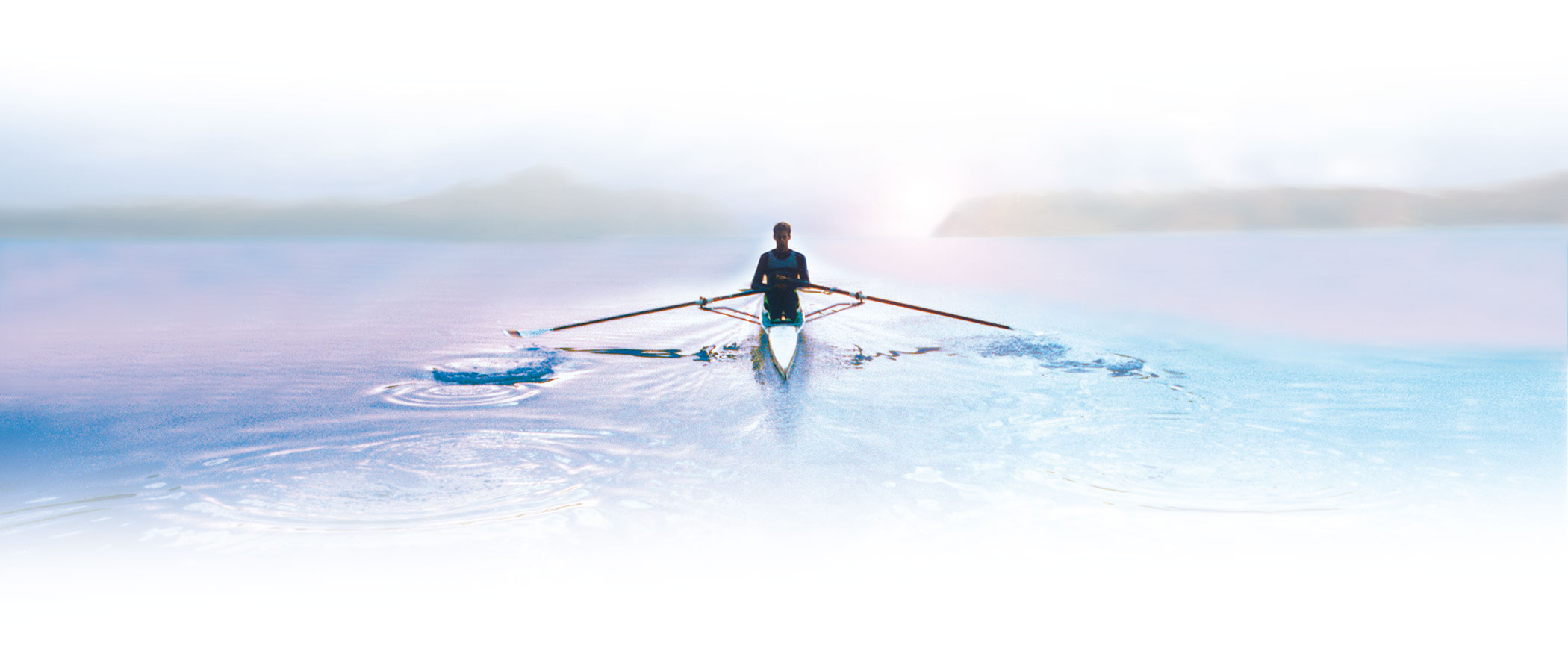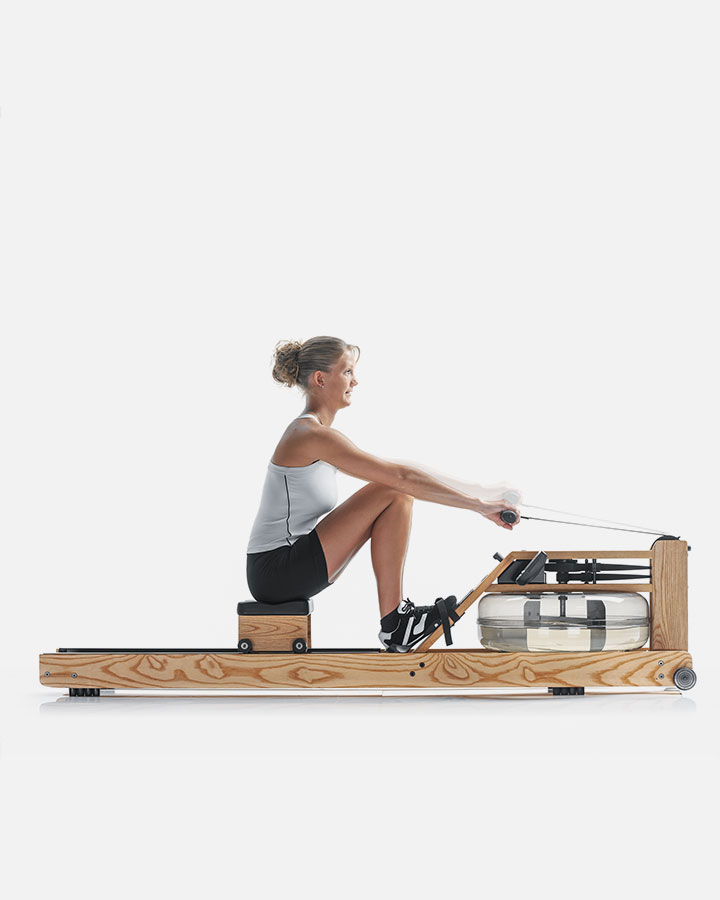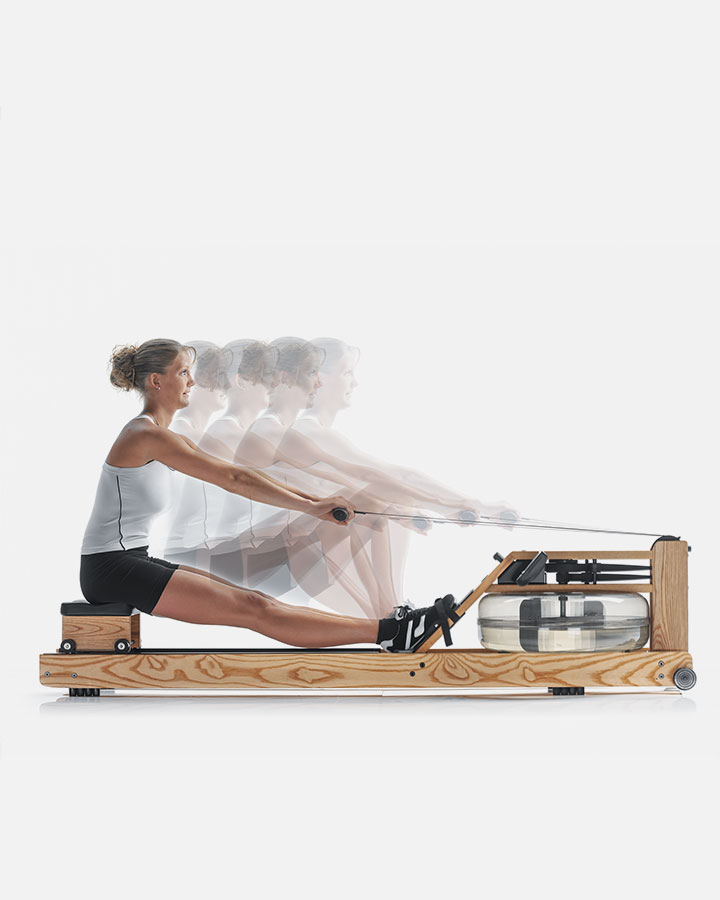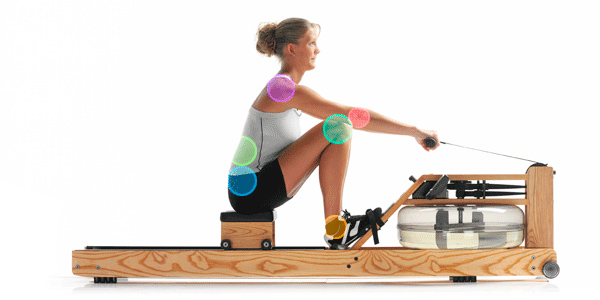WaterRower - Rowing Training
Whether you’re a seasoned athlete or a fitness enthusiast looking for a powerful indoor training method that will deliver exceptional results: training on the WaterRower will check all the boxes! Indoor rowing provides a total-body workout that targets multiple muscle groups simultaneously for an extremely efficient, time-saving training session. Rowing is a low-impact form of exercise, minimizing stress on your joints while still giving you an intense cardiovascular workout.

BENIFITS OF WATER RESISTANCE
LOW IMPACT
The smooth and consistent resistance provided by water ensures a low-impact yet highly effective workout. This means reduced strain on your joints, making the WaterRower suitable for individuals of all ages and fitness backgrounds. You can train with confidence, knowing that the water resistance will support your movements and provide a challenging, yet joint-friendly workout.

Engage 84% of your muscles
FULL-BODY WORKOUT
Unlock a full-body workout when training on the WaterRower. Major muscle groups are activated and strengthened while you row. Legs: When you push off from the footrest, this drive generates power and propels you backward. Core: Your core muscles, including the abdominal muscles, obliques, and lower back, play a crucial role in stabilizing your body during rowing. They help you maintain proper posture, balance, and alignment, providing a solid foundation for efficient rowing. Back: The pulling motion engages several muscles in your back, working together to control your motion. Arms & Shoulders: As you pull the handle toward your chest, your arm and shoulder muscles come into action, enhancing upper body strength and definition.
ROWING TECHNIQUE
The Art of Rowing
Whether you’re a novice or an experienced rower, here are some simple tools to help you perfect technique and maximize performance: Rowing is more than just pulling on a handle. It’s a harmonious blend of power, precision, and fluidity: proper technique is key! Your aim is to create a fluid and efficient motion, going through phases, such as the “catch” or “drive” positions, or “release” and “recovery”. The phases create a continuous cycle, forming a rhythmic and coordinated motion of the rowing stroke. Achieving an effective and efficient rowing stroke allows the rower to optimize power output, engage multiple muscle groups, and reach a smooth, flowing rowing motion.
Join a thriving community of over 70,000 users who have made WaterRower Connect their go-to fitness solution. Our free app is exclusively designed for all WaterRower models, offering you a new platform to enhance your rowing experience. Optimize your rowing technique, monitor your heart rate, and take on preset rowing challenges. Start rowing, tracking, and reaching your fitness goals with WaterRower Connect.
WATERROWER | NOHRD
ENGAGE YOUR MUSCLES
Synchronise Your Movements
Rowing training delivers a multitude of health benefits. You can count on performing over 50 varying moves per minute! It promotes muscle strength and endurance,
improves cardiovascular fitness, enhances core stability and posture, and provides a full-body workout that targets various muscle groups simultaneously.
Strengthen the following areas and joints with rowing exercise:
- · Arms
- · Shoulders
- · Overall core
- · Lower back
- · Hips
- · Legs
- · Knees & ankles
Rowing training truly hits the bullseye of exercise options by offering a comprehensive, efficient, and enjoyable workout experience. It’s a winning combination of full-body engagement, cardiovascular fitness, low-impact benefits, versatility, and mental well-being.
The “Drive” phase works the following major muscle groups:
- · Quadriceps (front of thighs)
- · Gluteus Maximus (largest muscle in the buttocks)
- · Hamstrings (back of thighs)
- · Gastroenemius and Soleus (calf muscles)
- · Core muscles (incl. abs and lower back)
- · Latissimus Dorsi (large muscles of the back)
- · Deltoids and Rhomboids (shoulders)
The “Recovery” Phase works the following muscle groups:
- · Abdominals (incl. rectus abdominus, obliques)
- · Hip Flexors (psoas major, rectus femoris)
- · Hamstrings (control forward movement toward "Catch")
- · Upper back & Shoulders (rhomboids, trapezius, deltoids)
- · Biceps & Forearms
- · Lower Leg Muscles (gastrocnemius and soleus)
While the muscles are not as actively engaged as during the drive phase, proper posture, control, and coordination of these muscle groups are essential for an efficient and effective rowing stroke. They contribute to the overall fluidity and synchronization of the rowing motion.


















